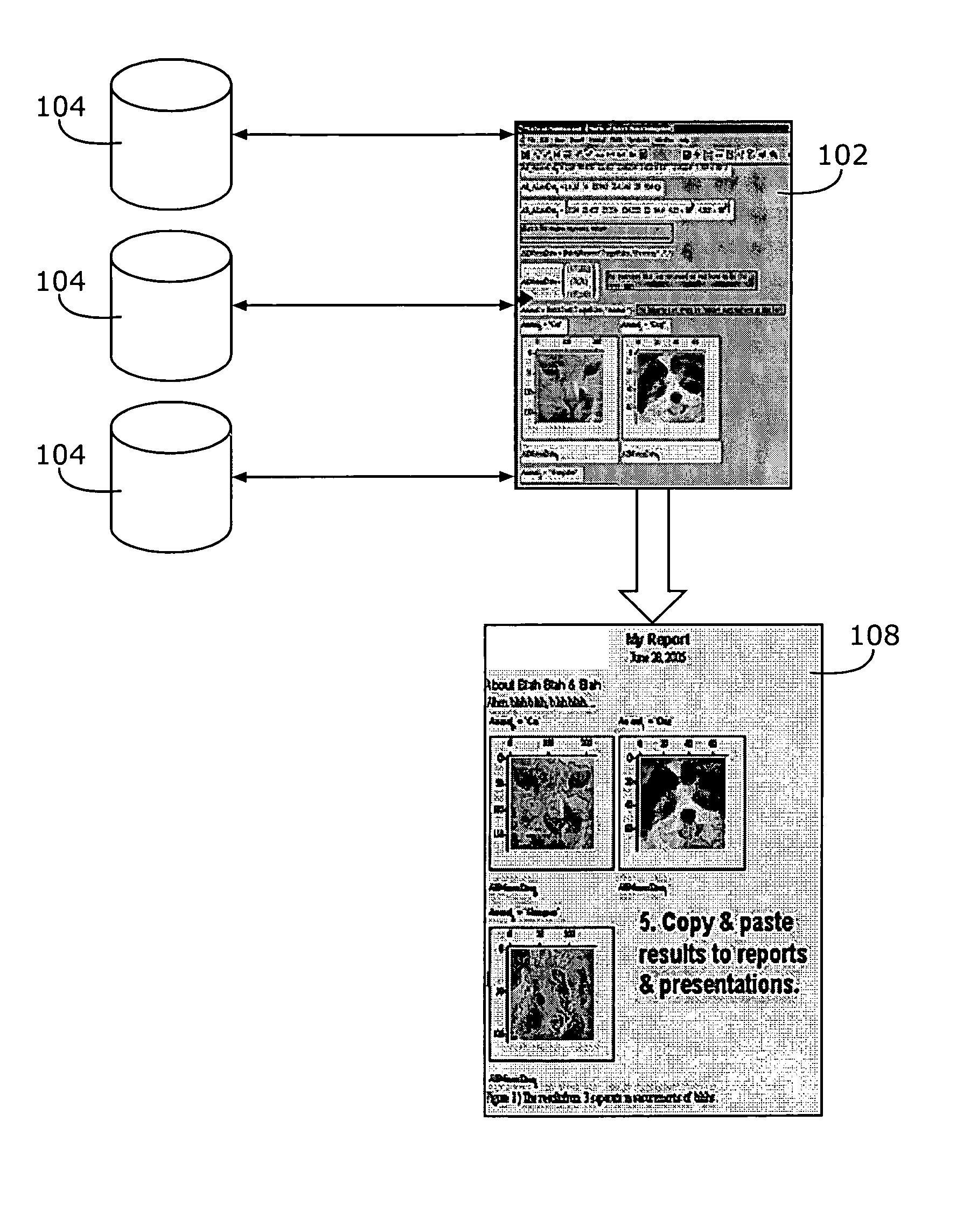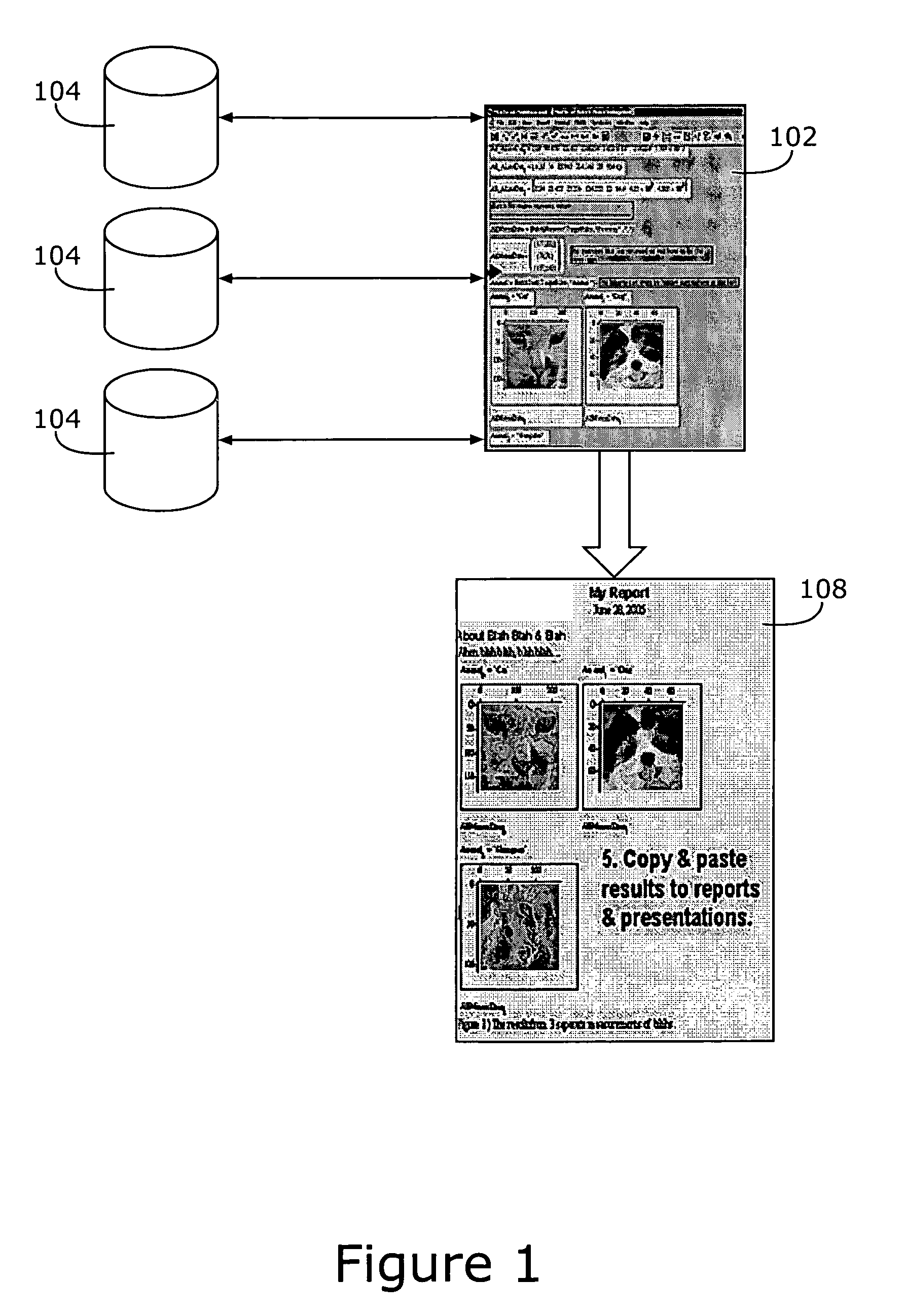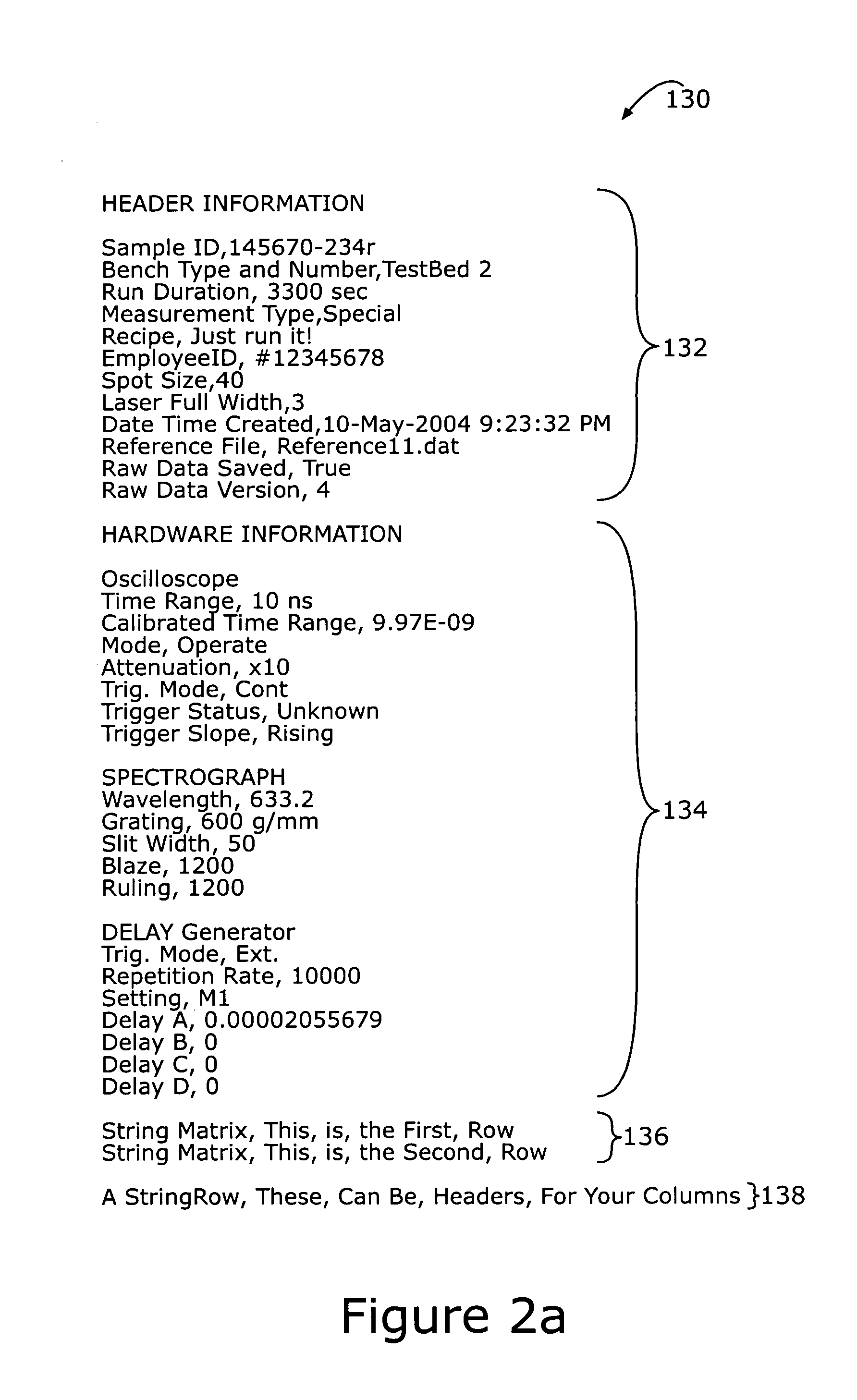A recent article in Discover
magazine states, “The
human brain has evolved different
modes for concentrating on a single thing versus
jumping from one thing to another . . . . And the cost is that it takes several minutes to shift back .
Operations that require a researcher to change his or her focus from analysis and
report writing to the
mechanics of loading, locating,
processing, changing views and transferring information from
raw data to finished reports can be at least slightly detrimental and possibly severely debilitating to the discovery and reporting processes.
While not all of the
raw data may be necessary in later analyses, often the researcher is not certain which data will be important for future post-measurement analysis.
This, however, is rarely done as it is far easier to save only the simplest data that is of the most interest at the time.
This practice is followed because it is often too difficult to extract the information of interest using standard packages when the data is buried in data files with data of mixed types.
Another issue important to a researcher is that, during the
initial phase of the R&D process, most aspects of the measurement systems and the data are evolving.
However, none of the currently available packages provides an integrated set of tools that enables a researcher to rapidly develop a flexibly configured results region and then automatically or semi-automatically import and analyze multiple complex text data files while monitoring a results focus region.
The analysis of data files using such rigid importation methods may be problematic when
processing more than one
data file.
Such fixed format data importation methods lead to an indirect association of the data with the variables and / or computational functions.
This approach often gives rise to computational errors when multiple, complex data files having different layouts are processed.
Computational errors may occur when a
data field exists in one file but not in the other, when the order of the data fields changes, the number of entries in a
data field changes, or the dimensionality of a
data field changes between files.
This approach requires that each
data analysis program must be stored and used only with a particular associated set of data files, which greatly increases the complexity of analyzing and processing multiple data files from evolving measurements and measurement systems.
The actions that must be taken by the user to monitor and compensate for indirect association errors and to maintain numerous analysis programs may cause a severe loss of focus on the part of the researcher when analyzing multiple files.
However, during the R&D phase, it makes little sense to spend time developing these interfaces or methods because the results of interest, the organization of those results, and the display of those results are in a continual state of flux.
Therefore, most of the recent efforts by
software companies to provide inter-
operability of analysis packages and fixed format styles of
report generation are of little use and little interest to scientists and engineers involved in the first stages of R&D or exploratory
data analysis.
An additional problem with developing protocols that transfer data between packages is the loss of focus that may occur when changing display windows.
Loss of focus may also occur when the person who is developing the data analysis routines must switch between the use of completely different languages and
algorithm development interfaces.
Another problem with
data exchange between various
software packages is that it typically requires the purchase of multiple
software packages for installation on each computer where the software is used.
Such approaches, however, do not typically address the unique needs of scientists and engineers who are developing measurement systems in an exploratory research mode.
In addition to the aforementioned deficiencies in data importation, deficiencies exist in data analysis packages of the prior art.
The locations of those specific cells within the workspace are typically not obvious or not easily determined.
This frequent shifting of focus may interrupt the user's
train of thought.
In addition, common spreadsheet programs do not provide a native
data file importation mechanism that can be activated by a simple index change or key press.
Finally, there is no native ability to easily
batch file process or organize imported data from multiple data files.
All such manual operations required for processing single and multiple data files may also cause a loss of focus for the user.
As a result, spreadsheet programs are not typically appropriate for analyses containing many computation steps or the importation of complex data from sets of multiple data files.
However, the data importation facilities typically provided by these analysis packages are still problematic.
Consequently, the problems caused by data importation methods that use indirect association described for spreadsheet programs are still present with these analysis packages.
Moreover, some
programming-style languages, such as
Matlab, do not use standard mathematical symbols for computations.
This is a detriment to engineers and scientists who are skilled in efficient mathematical language.
The need for manual window re-
sizing and the inflexible methods of computation and result organization hinder a user's important ability to rapidly and easily organize new and arbitrary information into computational and visual constructs.
Neither spreadsheets nor the multi-windowed
Matlab interface provide this capability and, consequently, both may lead to
confusion and loss of focus during their use.
However, the
programming style
user interface may seem cryptic in that extremely complicated and non-intuitive
programming statements are required to perform data analysis, graphing, and organizing single or multiple graphs.
These complicated analysis statements and non-intuitive graphing methods still require a considerable amount of focus to develop and review.
However, Mathematica does not provide guidelines for formatting and then importing complex data files; the user must develop his own text
parsing formats and routines.
Without guidelines, the data files are often organized by the researcher to appear more like spreadsheet formats, which becomes problematic when attempting to extract information in an automated fashion.
Mathematica does not solve all of the problems regarding complex data file handling, simple configuration of user interfaces and flexible results organization that are needed by the research scientist.
However, using databases for organizing information introduces new problems to the researcher.
However, the method is typically unacceptable if the data files evolve during the development phase of an R&D project.
As
computer processing and storage capacity increases, the need for efficient data storage diminishes for most users.
Unfortunately, Mathcad has major shortcomings when used as a scientific data file processing engine.
First, Mathcad does not provide general text data file viewing or parsing capability for even a single, complex, text data file.
The Mathcad file importation functions require a fixed format, which creates the same problems described hereinabove with regard to spreadsheets.
Therefore, the file importation tools provided by Mathcad have the aforementioned deficiencies of complexity in use and indirect
data association of the imported data with variable names in the workspace.
However, the Mathcad read functions do not parse the data files, but instead operate by use of a fixed format data importation method.
The
Data Analysis Extension pack provided by Mathsoft does provide commands that enable the importation of text data files into matrices, however, this does not allow direct parsing of the data files.
Because Mathcad cannot parse or a single, complex data file, it certainly cannot be used to process multiple text data files with a complex and varied mixture of data entries that may evolve over time.
Because of these limitations, Mathcad by itself cannot be used to enable the automatic or semi-automatic parsing of single or multiple files or
batch file parsing.
The user must also work in a multi-windowed, programming-centric environment where the region of focus for imported data, analysis algorithms and results cannot be easily or flexibly configured into a single workspace and a single focus region.
ParseRat does not provide the ability to integrate data imported from files directly into the analysis
package.
This additional step increases the complexity of data analysis and requires that at least two sets of files must be managed: the original file and the converted file that will be imported into the analysis
package.
When processing large numbers of complex text data files, it is generally not sufficient to provide some aspects of
automated data processing while ignoring other aspects.
A
computer program that does not use true mathematical notation or does not adhere to top-down analysis flow, but provides
text file parsing and graphs alone will not provide the
general purpose, convenient interface that is required for enabling a scientist or engineer to maintain optimal focus.
Similarly, a
computer program that provides mathematical notation, but which ignores the need for automated parsing and importing of text files will require that the user engage in numerous manual operations to import data from multiple files into the analysis
package which may also cause a loss of focus.
A program which does not allow automatic updating of computations in a
static display, or scrolls the display of interactive commands in the viewing area, or forces the use of multiple windows for viewing different types of information, also creates an undesirable loss of focus to the user.
Loss of focus also occurs if the user must develop and maintain protocols or programming statements that transfer data and results between formats and / or between different software packages.
However, they will probably not switch to a
software package that does not provide a complete multi-file processing solution or is cumbersome to program.
Such a limitation would merely present a new set of deficiencies to the user.
 Login to View More
Login to View More  Login to View More
Login to View More 


